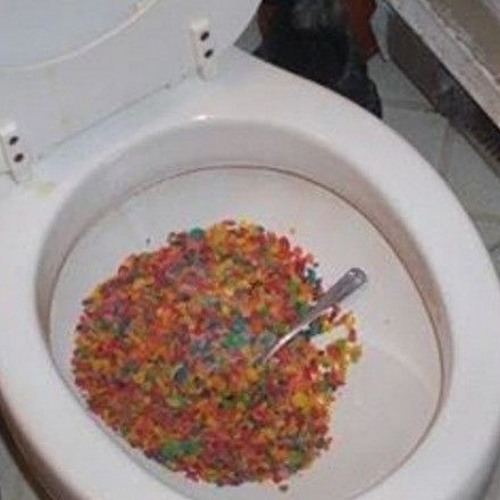Can One to Flush Food in the Toilet?
Can One to Flush Food in the Toilet?
Blog Article
Everybody has his or her own opinion when it comes to Is it safe to flush food (especially rice) down the toilet?.

Introduction
Lots of people are typically faced with the problem of what to do with food waste, particularly when it involves leftovers or scraps. One typical inquiry that emerges is whether it's fine to purge food down the toilet. In this article, we'll explore the reasons individuals may consider flushing food, the effects of doing so, and alternate approaches for appropriate disposal.
Reasons that individuals might take into consideration flushing food
Lack of recognition
Some people might not be aware of the potential harm caused by flushing food down the commode. They might wrongly think that it's a safe technique.
Comfort
Flushing food down the bathroom may appear like a quick and very easy option to throwing away undesirable scraps, especially when there's no neighboring trash bin readily available.
Idleness
In many cases, individuals may simply pick to flush food out of large idleness, without thinking about the effects of their activities.
Repercussions of flushing food down the commode
Ecological influence
Food waste that ends up in rivers can contribute to air pollution and injury water ecosystems. Furthermore, the water made use of to flush food can stress water sources.
Plumbing issues
Flushing food can result in stopped up pipelines and drains, creating expensive pipes repair services and inconveniences.
Types of food that ought to not be flushed
Coarse foods
Foods with fibrous appearances such as celery or corn husks can get entangled in pipes and cause obstructions.
Starchy foods
Starchy foods like pasta and rice can absorb water and swell, causing blockages in pipes.
Oils and fats
Greasy foods like bacon or food preparation oils need to never be flushed down the commode as they can strengthen and cause clogs.
Appropriate disposal methods for food waste
Making use of a waste disposal unit
For homes furnished with waste disposal unit, food scraps can be ground up and flushed with the pipes system. However, not all foods are suitable for disposal in this fashion.
Recycling
Certain food packaging materials can be reused, decreasing waste and minimizing environmental effect.
Composting
Composting is an environment-friendly means to take care of food waste. Organic materials can be composted and used to enhance soil for horticulture.
The importance of appropriate waste administration
Lowering environmental injury
Proper waste monitoring methods, such as composting and recycling, assistance minimize air pollution and maintain natural resources for future generations.
Safeguarding pipes systems
By preventing the technique of flushing food down the toilet, homeowners can protect against expensive plumbing fixings and keep the stability of their plumbing systems.
Conclusion
In conclusion, while it may be appealing to purge food down the commode for benefit, it is necessary to comprehend the potential effects of this activity. By adopting appropriate waste management techniques and dealing with food waste responsibly, individuals can contribute to much healthier plumbing systems and a cleaner setting for all.
FLUSH FOOD DOWN THE TOILET?
FLUSHING FOOD CAN CAUSE BLOCKED DRAINS IN YOUR HOME
All of the plumbing fixtures in your home are connected to the same sewer pipe outside of your home. This outdoor sewer pipe is responsible for transporting all the wastewater from your home to the Council sewer mains. Even small pieces of food that go down the kitchen sink can cause problems for your sewer. It should therefore be obvious that flushing larger bits of food, such as meat, risks a clog in either the toilet itself or the sewer pipes. Flushing greasy food is even more problematic because oil coagulates when it cools, coating the interior lining of your pipes.
THE TOILET IS NOT A BIN
Food isn’t the only thing that people shouldn’t be flushing down the toilet. People use the toilet to dispose of all kinds of things such as tampons, makeup wipes, dental floss, kitty litter and even underwear. Water goes to great lengths to educate residents about the high costs and stress placed on wastewater treatment systems simply from people flushing the wrong stuff down the toilet. It costs taxpayers millions of dollars each year, and homeowners thousands in blocked drain repairs.
FLUSHING FOOD IS A WASTE OF WATER
Flushing food is a waste of our most precious resource - water. In June this year Level 1 water restrictions were introduced to protect water supply from drought conditions. Much of New South Wales continues to be affected by prolonged drought with recent figures revealing up to 97 per cent of the state remains in drought. Depending on whether you have a single or dual flush toilet, every single flush uses between five and 11 litres of water. In the current climate this is a huge amount of water to be wasting on flushing food that should be placed in the bin (or better yet, the compost).
https://www.jabplumbingsolutions.com.au/blog/can-you-flush-food-down-the-toilet

I hope you liked our part about Think Twice Before Flushing Food Down Your Toilet. Thanks for taking a few minutes to read our content. Are you aware of another individual who is sincerely interested in the niche? Why not share it. We appreciate your readership.
Book An Estimate Now Report this page